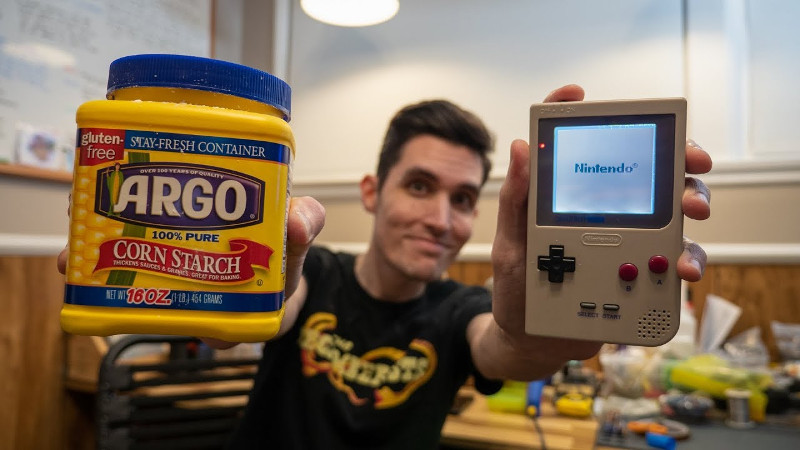Nintendo’s Game Boy was the handheld of the 1990s. Like many of their products, it was famous for its ability to stand up to punishment from angry children and military strikes alike. Its biggest weakness is perhaps its unbacklit LCD screen. Retrogamers and chiptuners alike find themselves modifying and replacing these regularly.
A common problem during these swaps is “Newton rings” – an issue where the polarizer comes into contact with the LCD glass, causing unsightly visual artifacts. Thankfully, there is a simple fix. It’s possible to keep the two separated with the application of microscopic particles, too small to see. [esotericsean] uses cornstarch, while [bogamanz] favors diatomaceous earth. For best results, a makeup brush can be used to apply a fine coating, and compressed air used to clean out the Game Boy and remove any excess.
It’s rare to fix a delicate screen problem with a household staple, but gratifying when it works. The results are hard to see on camera, but many report this fixing the frustrating issue. So, if you’re planning to backlight your Game Boy, keep this in your bag of tricks. It’ll allow you to get the best possible result, and may be useful on other old-school LCDs as well. Video after the break.
















The bright spot he points at before the repair is still there after the repair.
I saw the exact same thing. My first thought was that he wasted 20 minutes messing around and didn’t solve anything.
Nice “snuck in” Cocaine reference @ 1:20 – LOL. Yeah, I didn’t see any difference either.
Exactly, what is the purpose of this “trick” then?
this is an old timers trick used for camera bodies that the rubber is starting to go off of and many other things. the biggest problem with this is that it is at best a very short term temporary fix.
Not quite the same purpose (though I have experienced what you are talking about and it is indeed very annoying when it happens). In this case a light dusting of a fine powder is applied to either side of the polarizing filter (which is removed along with the reflective layer of the LCD in order to backlight the original non-backlit screen) in order to prevent the filter from touching the glass and causing an distracting optical phenomenon known as newton rings from showing. I’ve had gameboys I’ve used this method on over a decade ago and they still look great.
Be careful of DE, one of its primary properties is that the granules are sharp edged (they will slice open cellular pathogens, that’s why it’s used in filters), putting something with sharp edges on your glass/plastic sounds like a good way to get scratches on it.
How do you figure they polished that glass? Do you maybe think it was with micron sized particles that are sharp edged?
Hey, thanks for featuring my video! Too bad it wasn’t one of my best. ????
This “hack” really does work, I just didn’t show it well enough in this video.
And if the hack does not work, you still have enough corn starch left to make pudding..
Ummm, fresh, hot pudding…..